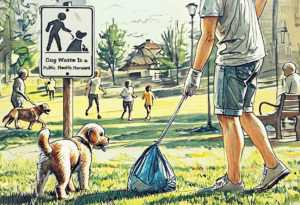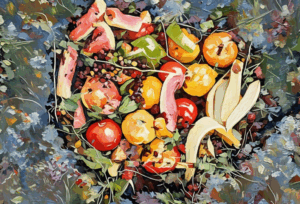
Photo courtesy of Carmelina Ventura
“Leave no trace .” These three words are repeated like a yoga mantra during my 14-day canoe trip through the Canadian boundary waters. They become etched in my brain. I question my counselors at first: quit nagging us to clean up after ourselves. But soon, I realize that this is more than just a command— it’s a frame of mind. It represents the mindset of a person dedicated to the preservation of wildlife that surrounds her in the deep forest, follows her down the portage trails and glides with her through the clean, clear water of the Canadian lakes. It is the rallying cry for the person who loves to listen to a loon’s wail at dawn, the barred owl’s “who cooks for you” hoot at dusk and the lone goose’s honk as she catches up to her flock overhead. In its truest sense, it is a mantra: a statement or slogan repeated frequently to reinforce a belief, mindset, or philosophy.
Over the course of my trip, I had to adapt to this. Although difficult, I knew that I was solely a visitor in the home of so many different trees, animals, plants, and more. At home, when I accidentally ripped my candy wrapper and a small piece floated away in the wind, I wouldn’t even think twice about going after it. Conversely, if this had happened on the grassy bank of the lake, I would sprint after it, determined not to let it land in the icy river water, where the walleye and trout will soon fall victim.
Leaving extra food on the grounds of campsites adversely harms nearby animals. Not only does it intrude on their habitat in the short term, but it also poses the future risks of proper nutrients in their diet, stopping them from foraging for their own food, and ultimately devastating the overall health of their digestive system.
An extreme example of how small actions can trigger enormous consequences is arguably one of the most beautiful and well-regarded landmarks in the world: Mount Everest. Because the slopes near the base camps are littered with tons of trash, wasted food, forgotten tents, and more, Mount Everest is now known as “the World’s Highest Garbage Dump.”
This unsightly name is due to the fact that climbers, both those attempting to reach the top or simply visiting for the day, do not bring the garbage that they accumulate along the way back down to the base camp for disposal. With spiritual energy woven throughout its peaks, Mount Everest is truly a sacred home, and our wasteful mindsets can be costly to their religious history. Because it is truly a home in all senses, our wasteful mindset hinder our respect towards its religious history. This problem is not only detrimental to the environment and health of the previously flourishing wildlife at this mountain, but also around the entire world.
Improperly discarding of garbage ingrains our footprint behind in places that wish to be completely clean. It is incredibly unfortunate that we put convenience over going one step further to prevent unnecessary damage.
And so, steps must be taken so that we can share these special experiences in nature with future generations. If the wilderness becomes a landfill by our own doing, our visitation will become prohibited. So the question now becomes: what can we do as a society in order to prevent this from happening?
From ditching the plastic forks and switching to metal to leaving behind non-reusable items like paper plates and napkins, leaving no trace does not have to be a complicated process. Trash is piled up in places that are not designed to remove it on their own. Therefore, as a society, we must alter our camping practices in order to ensure that we preserve the quality of our environments, or we risk losing these unique regions of the World altogether.
Protecting campsites and the natural environment all over the world is not a one-person job. Yet, you can start by changing your own habits to prevent random litter from floating around lakes or sprawling behind trees. By using reusable items, collecting all trash from your campsite, and never leaving any food behind, your actions can be a step in the right direction to preserving our wilderness for countless years to come.
Works Cited
Brice. “10 Ways to Create Less Trash at Camp.” Leave No Trace, 15 June 2018, lnt.org/10-ways-to-create-less-trash-at-camp/.
“Food Storage 101 – Leave No Trace.” Leave No Trace, 11 June 2020, lnt.org/food-storage-101/#:~:text=It%20can%20bring%20them%20to. Accessed 13 Sept. 2024.
“Inside the Culture… Nepal.” Earth’s Edge, 10 Dec. 2021, earths-edge.com/inside-the-culture-nepal/. Accessed 19 Sept. 2024.
National Geographic. “Trash and Overcrowding at the Top of the World | National Geographic Society.” Education.nationalgeographic.org, National Geographic, 20 May 2022, education.nationalgeographic.org/resource/trash-and-overcrowding-top-world/.
The views and opinions expressed are those of the authors and do not necessarily reflect nor represent the Earth Chronicles and its editorial board.




